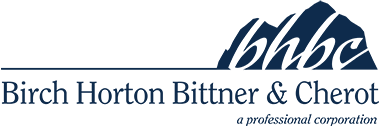Written By: Michael Sebring & Jon M. DeVore
Each year, Alaska Native and rural communities across Alaska apply for and receive grants to assist them in funding drinking water and wastewater infrastructure projects. Some of these communities are critically under-served by water infrastructure. What does critically under-served look like? Up until 2016, citizens of Kwethluk “self-hauled potable water from a central distribution point and disposed of human waste using open buckets that were transferred in collection containers via ATV to a lagoon outside of town.”[1]
Now, $50 million in annual grants and loans to the State of Alaska to benefit these communities would be eliminated under the budget proposal released March 16 by the Trump Administration. While the President’s budget asserts it provides “robust funding for critical drinking and wastewater infrastructure,” Alaskans themselves will face increased competition for non-dedicated federal funds if these programs are cut from the final federal budget.
The communities likely hardest hit by the elimination of these programs are those that continue to be unserved by water infrastructure. This includes Akiachak, Stebbins, Kipnuk, Shishmaref, Teller, and twenty-six other communities across Alaska. Likely next in line to receive life changing infrastructure support from the Village Safe Water Program, these communities could be out of luck if the federal government decides to eliminate funding for the program.
Both the Alaska Native Village and Rural Communities (“ANV”) Program ($20 million in FY2016)[2], administered by the EPA and the U.S. Department of Agriculture’s (“USDA”) Water & Waste

Successful Installation of Water and Wastewater Infrastructure in Rural Alaska (Piping must be insulated and above ground due to freezing cold temperatures)
Disposal Loan & Grant Program ($30 million in FY2016)[3] contribute to fund the Alaska’s Village Safe Water Program every year. Projects include installation of piping systems, septic tanks, and wells in addition to technical and financial training assistance for infrastructure maintenance. And over the last 20+ years, since the initiation of EPA and USDA funding, the percentage of rural Alaska households with “adequate sanitation facilities” has increased from 37% to 77%.[4]
So where will Alaskan communities get funding for water infrastructure? Under the America First: A Budget Blueprint to Make America Great Again, this dedicated funding for Alaska water infrastructure programs would be eliminated and consolidated into a separate non-Alaska-specific program. Both the EPA’s ANV Program and the USDA’s Water and Wastewater loan and grant program would be zeroed out. Instead, Alaska Native communities would need to seek assistance from the now-depleted State of Alaska administered Village Safe Water Program, currently seeing only 25% matching funds provided by the State of Alaska. Alternatively, the blueprint suggests these communities seek funding from private sector financing or the EPA’s State Revolving Funds, which are maintained under the Trump budget but are not dedicated to Alaska’s rural and Alaska Native communities.
It’s important to note that the America First budget blueprint for FY18 is merely a budget proposal. It is not law and cannot be implemented without Congress. However, the budget is a tool used by Presidents to sway Congress on which programs should be highlighted with increased funding or deemphasized with decreased or eliminated funding. The President’s budget reveals important preferences on which programs the Administration thinks should be prioritized. Accordingly, the Republican Congress will likely use the Trump Administration’s budget blueprint as a guide during the appropriations process this spring and summer. With this budget blueprint’s release, it is clear that Alaska water infrastructure funding is in serious jeopardy.
Contact BHBC
Birch Horton, with offices in D.C. and Alaska, is perfectly positioned to provide impactful assistance on federal issues that affect Alaskans, such as the issue mentions above. If you have any questions about how these issues will impact you, Jon M. DeVore of our Government Relations team can help answer your questions and discuss options available to take an active role in influencing policymakers in the Administration and Congress. Jon is can be reached via telephone at office and via email at [email protected].
[1] EPA: “Alaska Native Village and Rural Communities Program Annual Report 2015”
[2] 129 STAT. 2555 (P.L. 114–113, Consolidated Appropriations Act, 2016, Title II Environmental Protection Agency (3))
[3] 7 U.S.C. 1926d
[4] Alaska Department of Environmental Conservation Village Safe Water Program.
Michael Sebring is the Legislative Director and Law Clerk and Jon M. DeVore is a Shareholder in the Washington, D.C., office.
